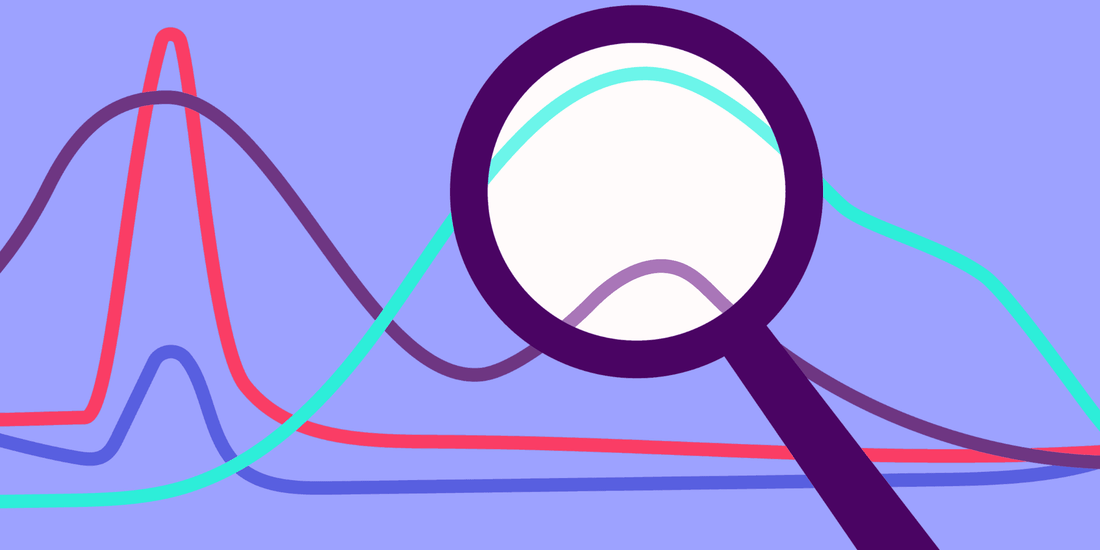What are blood glucose curves?
The amount of blood sugar in our body is constantly changing and subject to fluctuations. Typically, our blood sugar levels are lowest in the morning before breakfast and highest shortly after a meal—especially if that meal is high in carbohydrates. We also have higher blood sugar when we exercise or are stressed.
A blood sugar “curve” is the line we can draw on a graph to show the rise or fall of our blood sugar levels as a result of eating, stress, intense physical activity, or sleep.
What are the normal blood sugar values?
Ideally, our blood sugar level should be in a healthy range of 80-110 mg/dl.
If your blood sugar level rises significantly above this normal value, a glucose spike occurs.

What is a glucose spike?
A glucose or blood sugar spike occurs when blood sugar levels rise. This typically occurs after a meal, physical activity, or when stressed. Generally, a rise in blood sugar levels is a natural and temporary part of your blood sugar curve. However, if you experience multiple spikes throughout the day (and these blood sugar levels are above the healthy range mentioned above), you are at risk of developing unhealthy, unstable blood sugar levels.
Frequent and persistent high blood sugar spikes cause your body to remain in a hyperglycemic state (= excessive blood sugar) for longer. This increases oxidative stress, glycation (the process by which sugar binds to proteins or lipids) of important proteins and lipids in your body, and inflammation.
In this state (hyperglycemia), your body releases more insulin into the bloodstream, which can further increase the uptake of glucose from the blood into the cells. Over time, an increased amount of insulin can cause your cells to become less sensitive to insulin. This means you respond less well to insulin and the uptake of blood glucose into the cells occurs more slowly.
A slowdown in the process by which your body absorbs sugar can lead to elevated blood sugar levels. This causes a range of undesirable psychological and physical effects. In the long term, it can even lead to very serious and potentially fatal health conditions.
What happens in my body when my blood sugar spikes or drops?
Short-term blood sugar spikes are associated with fatigue, brain fog, mood swings, and excessive hunger.
If you consume a lot of sugar in a short period of time, this overwhelms your pancreas, as it has to release a large amount of insulin to combat the glucose. This leads to what is known as reactive hypoglycemia , also known colloquially as low blood sugar : After a rise in blood sugar levels, blood sugar levels quickly drop to an undesirable level, leading to increased cravings and mood swings.
Recurrent hypoglycemia leads to a weakening of the body's natural control mechanism, which raises blood sugar levels back to the desired range. In the long term, recurrent hypoglycemia leads to metabolic disorders.

What does a blood sugar spike feel like?
Signs and symptoms of high blood sugar:
- Brain fog: You have trouble concentrating or remembering something.
- Exhaustion: You feel incredibly tired and listless, even though you slept well and drank a cup of coffee.
- Irritability: Everything and everyone annoys you.
- Cravings : You have just eaten, but you don't feel full and are already thinking about what to eat next.
What effect do glucose spikes have on my body?
In the short term, blood sugar spikes are simply unpleasant. They make it difficult to live your life the way you want. Mood swings can also affect your productivity at work and your relationships. They can also derail your diet plans because high blood sugar levels make it difficult to lose weight.
In the long term, chronically high blood sugar levels can lead to metabolic disorders, faster aging, and a reduced life expectancy through the development of potentially fatal diseases such as cancer.
How many blood sugar spikes per day are normal?
Generally, blood sugar spikes are nothing to worry about as long as they aren't too severe and stay within the desired range. While it's better to have as few blood sugar spikes as possible throughout the day, it's impossible to completely avoid them after eating or exercising. However, you can take proactive and early steps to ensure your blood sugar levels stay within the desired range.
You can expect your blood sugar level to rise after every meal. It will also rise sharply if you eat a very sugary food like a chocolate bar or candy in the middle of the day. Drinking alcohol also causes your blood sugar level to spike. This is especially true if you reach for high-sugar cocktails or high-carbohydrate beer. White wine or spirits are a better choice in this case.
Even an intense workout will inevitably cause your blood sugar levels to spike. But that's no reason to worry! Physical activity activates several mechanisms, such as increased insulin sensitivity, so even blood sugar spikes are healthy. While exercise is stressful for your body, you can view it as positive stress.
This way, you can plan very strenuous training sessions in the morning or early morning, for example, so that your blood sugar level has stabilized by the time you go to bed and your sleep is not disturbed.

How can I control blood sugar spikes?
There are some glucose spikes that are the most difficult to control: blood sugar spikes caused by stress. To avoid these, it's important to reduce stress in the long term, for example, by trying to get a good night's sleep. Practicing mindfulness and meditation are also good ways to relieve (chronic) stress.
But now the good news: food-induced blood sugar spikes are much easier to manage!
Here are some points to consider:
- Be smart about eating carbohydrates.
- Avoid products with added sugar such as cakes or pastries.
- Whenever possible, choose whole grain foods instead of simple white carbohydrates.
- Opt for whole foods. Choose whole fruits instead of juices or smoothies, and always combine them with healthy fats and proteins.
- Make sure you eat the right amount of food: eating too much can also cause your blood sugar to rise.
- Eliminating added sugar reduces the amount of readily available glucose in your diet. It's well known that consuming carbohydrates in combination with fiber, fat, and protein reduces the rise in blood sugar levels because they slow the rate at which the body makes glucose from food available.
How can I avoid blood sugar spikes after eating?
If you want to avoid a blood sugar spike, remember to eat breakfast. It should be savory and never sweet. But that doesn't mean you can't eat fruit at all. As with everything, the dose makes the poison.
Avoid blood sugar spikes – this is what your healthy breakfast could look like:
- slice of wholemeal bread
- Some cheese
- Avocado or an egg
- Small piece of fruit
Your blood sugar curve rises very slowly and your blood sugar level remains in the healthy range.
Looking for another food hack?
Drink some apple cider vinegar before a heavy meal. You can either mix it with some tap water and then drink it, or use it as a dressing over your green salad.
A 10- to 15-minute walk after eating also helps your body absorb excess glucose into your bloodstream more quickly, reducing the duration and severity of a food-induced blood sugar spike.
When should I be concerned and see a doctor?
If you're already checking your blood sugar levels and have noticed that your blood sugar levels are repeatedly above 100 mg/dL in the morning and on an empty stomach, this could be a sign of a more serious underlying condition such as prediabetes.
Have you noticed that your blood glucose levels are repeatedly above 140 mg/dL for up to two hours after eating? This could also be a cause for concern.
In both cases, we recommend that you consult a doctor.
Hyperglycemia and hypoglycemia: Are blood sugar spikes and drops healthy?
As mentioned above, blood sugar spikes and drops throughout the day are completely normal. They can be caused by diet, sleep, or exercise. If you experience symptoms like hunger, brain fog, or dizziness, this could indicate a blood sugar spike. But don't panic—there are several ways to cope.
The best way to get to know your body and understand what it needs is to check your blood sugar regularly. This will help you learn how to keep your levels within the ideal range and the short- and long-term health benefits this can have for you.




